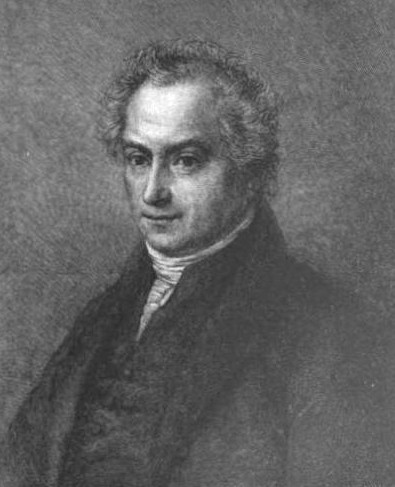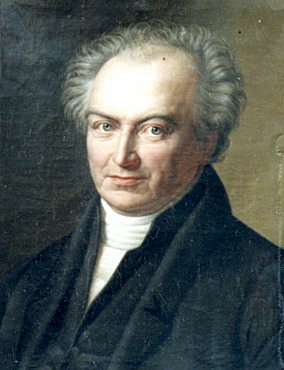<Back to Index>
- Physician and Astronomer Heinrich Wilhelm Matthäus Olbers, 1758
- Composer Simon Sechter, 1788
- Hetman of Ukraine Pylyp Stepanovych Orlyk, 1672
PAGE SPONSOR


Heinrich Wilhelm Matthäus Olbers (October 11, 1758 – March 2, 1840) was a German physician and astronomer.
Olbers was born in Arbergen, near Bremen, and studied to be a physician at Göttingen. After his graduation in 1780, he began practicing medicine in Bremen, Germany. At night he dedicated his time to astronomical observation, making the upper story of his home into an observatory. He also devised the first satisfactory method of calculating cometary orbits.
On March 28, 1802, Olbers discovered and named the asteroid Pallas. Five years later, on March 29, 1807, he discovered the asteroid Vesta, which he allowed Carl Friedrich Gauss to name. As the word "asteroid" was not yet coined, the literature of the time referred to these minor planets as planets in their own right. He proposed that the asteroid belt, where these objects lay, was the remnants of a planet that had been destroyed. The current view of most scientists is that tidal effects from the planet Jupiter disrupted the planet - formation process in the asteroid belt.
On March 6, 1815, Olbers also discovered a periodic comet, now named after him (formally designated 13P/Olbers).
Olbers was deputed by his fellow citizens to assist at the baptism of Napoleon II of France on June 9, 1811, and he was a member of the corps legislatif in Paris 1812 - 1813. He died in Bremen aged 81. He was twice married, and one son survived him.
Olbers' paradox, described by him in 1823 (and then reformulated in 1826), states that the darkness of the night sky conflicts with the supposition of an infinite and eternal static universe.
In 1827, he was elected a foreign member of
the Royal Swedish Academy of Sciences.
The following celestial features are named
for him: 13P/Olbers is a
periodic comet; Asteroid 1002 Olbersia; The crater Olbers on the Moon; Olbers, a 200
km diameter dark albedo feature on Vesta's surface.